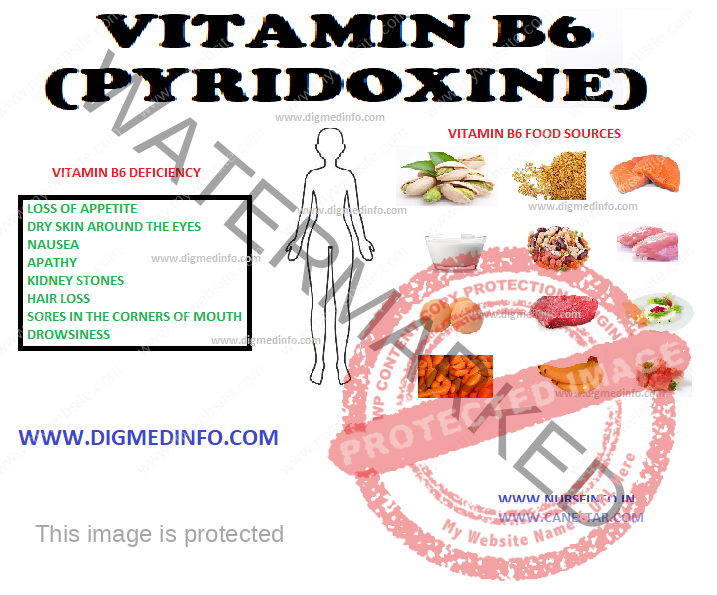PYRIDOXINE – Normal Daily Requirement, Clinical Features
The active form of this vitamin is pyridoxal. Pyridoxal phosphate acts as a coenzyme in several reactions, especially in the metabolism of amino acids and biological amines such as catecholamines and 5-hydroxytryptamine. It takes part in the biosynthesis of gamma-amino-butyric acid in the brain. Yeast, liver, meat, whole grain cereals, peanuts, bananas and legumes are good dietary sources.
Normal daily requirement is 1.25 mg and it is present in the ordinary Indian diets and hence nutritional deficiency is rare. Drugs like INH, oral contraceptives and hydralazine may interfere with the metabolism of this vitamin and produce conditioned deficiencies.
Clinical features include dermatitis, cheilosis, angulostomatitis, glossitis, dizziness, vomiting and peripheral neuropathy. Infantile convulsions have been attributed to nutritional pyridoxine deficiency. Pyridoxine deficiency is known to produce one form of sideroblastic anemia which responds to high doses of this vitamin.
Concurrent administration of 6 mg of pyridoxine prevents the development of neuritis in subjects treated with INH.


